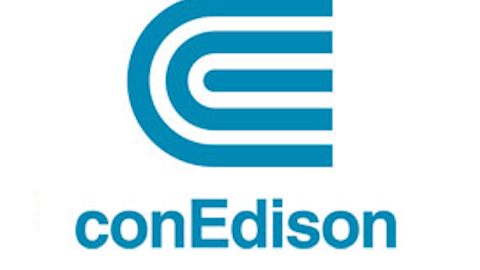Utility companies are far from exciting businesses, but their dependable cash flow, defensive characteristics, and typically reliable dividend payments can make them compelling stocks for investors living off dividends in retirement.

Consolidated Edison, Inc. (NYSE:ED) possesses many characteristics that make it appealing to conservative dividend investors. The company has served the New York marketplace for more than 180 years and has grown its dividend for over 40 consecutive years. In fact, ED is the only utility company in the S&P 500 with 30 or more years of consecutive dividend increases
At the end of September, 14 funds from the Insider Monkey database held long positions in Consolidated Edison, down by one over the quarter. These investors amassed positions worth $309.28 million and held around 1.60% of the company. Cliff Asness’ AQR Capital Management reported holding nearly 2.70 million shares of the company in its latest 13F filing, having increased its position by 23% during the third quarter.
While no stock is perfect, we hold Consolidated Edison (ED) in our Top 20 Dividend Stocks portfolio and our dividend portfolio for Conservative Retirees.
Business Overview
ED provides electric service to about 3.7 million customers and gas service to approximately 1.2 milliion customers mostly in New York City. ED is mainly a distribution company and has little power generation activities, and the far majority of its income is derived from regulated activities.
ED also plays a meaningful role in the renewable energy market. The company is the 6th largest owner and operator of solar PV in North America (behind Berkshire Hathaway, SunEdison, SolarCity, NRG) and had 446 megawatts of solar and wind projects in operation at the end of 2014.
Business Analysis
Many utility companies operate like monopolies in local or regional markets where it would be too costly to have multiple competitors offering electricity services. There are also few substitutes for electricity, and customers have historically had little to no choice over which supplier they receive service from and the price they pay.
Barriers to entry are generally high for several reasons. Maintaining transmission infrastructure to move electricity and gas from power plants to customers is extremely capital intensive and demands chronic maintenance and repair. For example, ED invests over $2 billion per year into its systems to remain competitive. In addition to cost, new entrants would need to obtain consent from the state authority, meet various safety and service standards, install transmission facilities to provide the service, comply with ongoing state regulations, and more.
Furthermore, following a wave of utility industry restructuring in the 1990s, all of the electric and gas delivery service in New York State is now provided by just four investor-owned utility companies or one of two state authorities. Given the local/regional nature of the business and the high amount of government regulation, it seems unlikely that another company would be authorized to provide utility delivery services where ED already has a presence.
Finally, the pace of change in the utility sector has historically been very slow. Much of the core technology developed for transmission lines has remained stable for decades. More recently, attention has increasingly focused on efficiency upgrades (e.g. the smart grid) and preparing for wider adoption of renewable energy sources (e.g. solar).
Key Risks
Despite the competitive advantages enjoyed by utility companies, they face several important limitations that serve to restrict their growth and profitability.
Traditional monopoly companies typically demonstrate strong pricing power. However, as most income investors know, maximum retail prices charged by regulated utilities are set by state governments. This limits the profitability a utility can enjoy and can significantly impact profitability. However, it does provide them a guaranteed rate of return (in most cases).
Given the capital intensity of transmission infrastructure and the government’s interest in keeping electricity prices reasonable for consumers, utilities typically earn a relatively low but stable return on equity.
Income investors should be aware of government regulations in the key states that a utility company operates in. Some areas are much friendlier than others, and rate policies can change over time.
If utilities receive unfavorable rate increases, they might be unable to offset cost increases they incur. Given their high debt loads, this can be a big deal. For example, during 2009, Moody’s downgraded ED’s credit rating by two notches after the company experienced a series of unfavorable rate cases.
Most recently, ED received news that its electricity rates will be flat in 2016 for the third year in a row. The high cost of living in New York probably doesn’t help the case to push rates higher each year. While it’s disappointing to not get a rate increase and puts more pressure on 2017, we think the company remains in good shape.
Overall, New York’s regulatory system has generally been consistent and reasonable over the years. Importantly, it includes revenue decoupling for electric and gas services. This means that the utility company’s profits are disassociated from its sales of the energy commodity itself. In other words, rates are adjusted up or down to help the utility meet a targeted rate of return regardless of how much product is sold.
Looking longer term, renewable energy sources will continue to impact the utility sector. For example, New York targets 50% renewable energy by 2030, twice the amount installed in the state today.
Finally, it’s worth mentioning that most utility companies will continue to deal with falling per capita energy consumption in the U.S. (energy efficiency) and a desire by customers to find cheaper, cleaner energy, including renewables. If customers are able to increasingly generate their own electricity (e.g. solar panels), it could take away sales from utilities and lead to higher costs for other customers.
We believe ED is better protected from this risk compared to other utilities because of its substantial investment in solar (6th largest operator in North America) and presence in New York City (wind farm activity is severely limited). We hope the renewables market will develop to allow utilities to own the renewable energy sources on behalf of customers rather than handing over more control to third-parties, but we will continue to watch for new developments.
Follow Consolidated Edison Inc (NYSE:ED)
Follow Consolidated Edison Inc (NYSE:ED)
Receive real-time insider trading and news alerts





